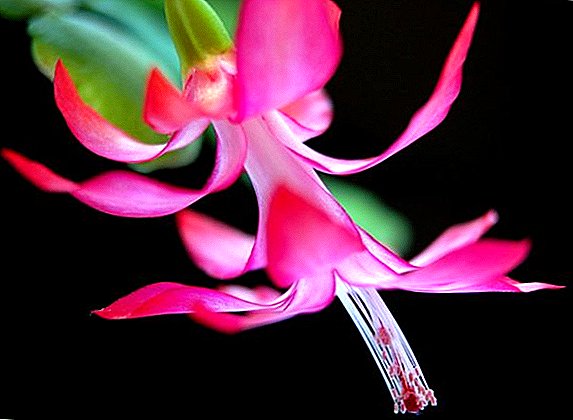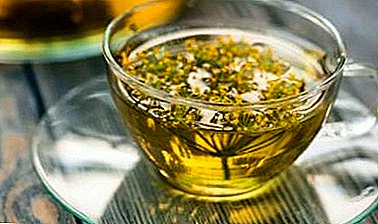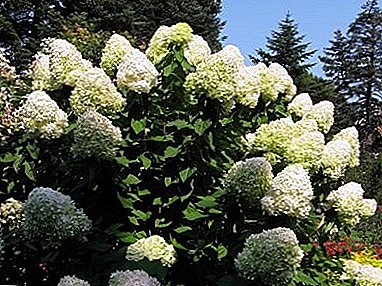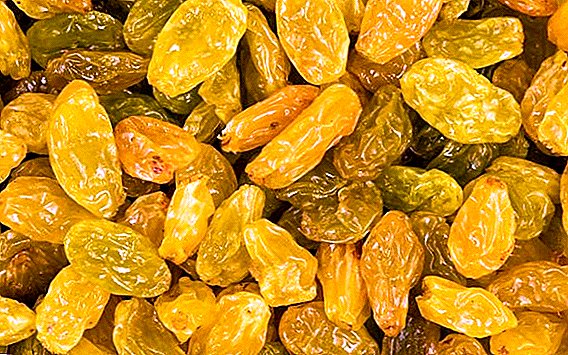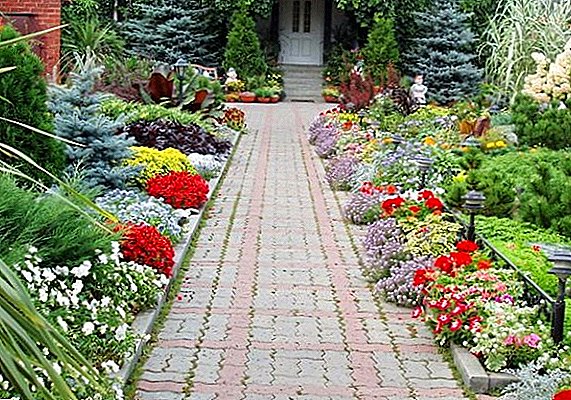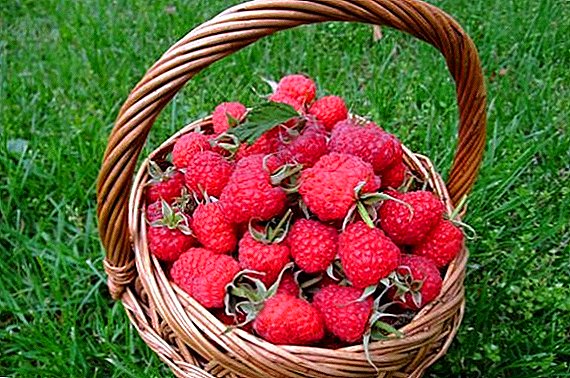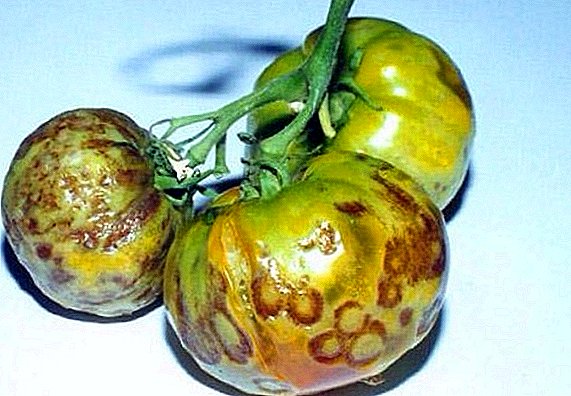
It is rarely possible to find a plant with high decorative qualities, but at the same time unpretentious in the care. One of these is Pelargonium Anita.
If you are looking for a beautiful flower, then pay attention to this plant.
How did this variety come about? What does he look like? This and not only will be discussed in this article.
Botanical description and history
Anita Pelargonium belongs to the family of Geraniahs. It belongs to rosewood varieties, therefore it has beautiful decorative buds, similar in shape to roses. It has high decorative qualities and is relatively easy to grow. Pelargonium Anita - artificially bred variety. On the whole, rosebud pelargoniums appeared due to artificial mutation.
Now, due to the fact that the species signs have taken root, rozbudki is a separate kind of zonal pelargonium, to which Anita belongs.
Appearance and photo of the plant
In height the plant can reach half a meter. In one season, quite a lot of inflorescences are formed, which gives the bush a lush look. Flowers of a plant have the form roundish and correct, with the closed core. Blooms pale pink color cool shade. The caps that form the flowers are quite dense and large. Special and valuable for the decorative qualities of the plant make its leaves, shiny and glossy.
It is believed that the flower releases into the air special phytoncides that kill the pathogens that are in the air, thereby having a positive effect on the indoor microclimate.



Landing nuances
It should be noted that Pelargonium Anita can only be planted with a cutting. When planting seeds, the hybrid properties are not inherited, so normal pelargonium will grow, without the properties inherent to Anita pelargonium.
Landing Instructions:
- Choose the necessary soil for planting and capacity.
- In the tank to make holes for drainage and fill with soil mixture.
- Prepared to plant the stalk in the ground.
- Water regularly and provide good lighting. After 2-3 weeks, the plant should take root and settle down.
Lighting
For abundant flowering plants need good lighting. If it is in the shade, it will grow, and flowering will be short. However, it is worth protecting the flower from bright direct sunlight, as this can cause a burn, because the petals are very delicate.
Soil requirements
Choosing the right soil composition for Anita's pelargonium important process. The soil must have high nutritional value and have good breathability. The best proportions for soil are as follows:
- sod land - 4 parts;
- peat ground - 2 parts;
- coarse sand - 1 part;
- small perlite - 1 part;
- humus - 2 parts.
If there is no possibility or desire to prepare the soil by yourself, you can use ready-made mixtures marked “for geraniums” or “for geraniums”.
Proper care
Watering
 Pelargonium Anita loves moderate watering, so you need to carry it out as needed. To understand when it is time to water, check the soil with your finger - if it is covered with a dry crust, then you need to water the plant under the root with water at room temperature, trying not to touch the leaves.
Pelargonium Anita loves moderate watering, so you need to carry it out as needed. To understand when it is time to water, check the soil with your finger - if it is covered with a dry crust, then you need to water the plant under the root with water at room temperature, trying not to touch the leaves.
In summer, it is recommended to water twice in the heat: early in the morning and in the evening. In winter, however, watering is reduced to once a week, and sometimes in two.
The leaves will dry out from drying up the soil, and the root system will rot from excessive moisture.
Air temperature
The optimum temperature for a plant is 18 to 25 degrees Celsius. If at lunch time the sun falls on a flower, then it is worth to priten it to avoid unpleasant consequences in the form of burns. In the summer, Pelargonium Anita, like other rose-tart pelargoniums, can be brought out, but it is not recommended to keep the plant there at temperatures below 10 degrees.
In winter, pelargonium needs to make peace - to provide a temperature regime of about 10 degrees, otherwise the plant during the flowering season may not give buds.
Attention! If brown spots appear on the leaves of the plant during wintering, this is a signal of too low a temperature, you need to put the flower in a warmer place.
Top dressing
Pelargonium Anita needs constant feeding, the only exception is the rest period - that is, the winter time when the plant is preparing for a new growing season and it is better not to disturb it. In spring and summer, fertilizer should be applied once every two weeks..
The easiest way to buy ready-made dressing marked "for geraniums" or "for geraniums." If there is a desire and opportunity to prepare the fertilizer yourself, then you need to consider that you need to take the same parts of minerals - nitrogen, potassium and magnesium, but before flowering, increase the composition of potassium and reduce nitrogen.
Experienced growers recommend for abundant flowering to take 1 drop of iodine to 1 liter of warm water and water on the wall of the pot to avoid burns. Fertilizer for pelargonium is very important, but it is necessary to observe the measure. If the leaves of the plant began to turn yellow, then this is a signal that indicates the need to adjust the dose of top dressing.
Pelargonium Anita requires potassium and phosphorus for more abundant and prolonged flowering.
Pruning
To obtain the desired shape of the bush it is necessary to periodically trim it.. However, in the spring such a procedure can be dangerous, since there is a risk of cutting off the forming inflorescences, so it is better to cut pelargonium after flowering. In order for lateral branches to appear, you need to pinch young shoots when 3-4 leaflets appear on them.
Possible pests and diseases
 Diseases and treatment: Stem and root rot. The root becomes black and rotting, the leaves turn pale, may turn yellow and curl.
Diseases and treatment: Stem and root rot. The root becomes black and rotting, the leaves turn pale, may turn yellow and curl.
Reason: high humidity and low acidity of the soil. Solution to the problem:
- limit watering;
- balance the composition of the soil;
- to process Fitolavinom, Biporam.
Pests: a spider mite and a whitefly and aphid are a danger to Anita. Insecticides are used to control insects, as well as regular inspection for the presence of pest larvae.
Breeding features
Pelargonium Anita can be propagated by cuttings year-round, but experienced gardeners recommend doing this from March to July.
Step-by-step instruction:
- From the mother plant to separate the semi-woody cutting from 5 to 7 cm long. It is not recommended to take green soft shoots, as they will not take root. Cut off with a sterile knife.
- Land for planting is better to buy, as it must be carefully disinfected.
- Dry the stalk and plant it in a plastic cup, in which a drainage hole is pre-made, and it is filled with an earthy mixture. Before planting, cut off all the leaves on the bottom of the stem.
- The stalk will take root in 2-3 weeks. Watering is needed at the root as needed. Do not lose sight of such an important aspect as lighting.
Important! It is impossible to cover the cutting with something, since this may lead to the decay of the shoot.
Following simple tips you can grow a beautiful flower, which for a long time will please the eye with its beautiful flowering. And, importantly, Anita's pelargonium does not require much time to leave.


